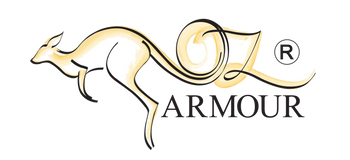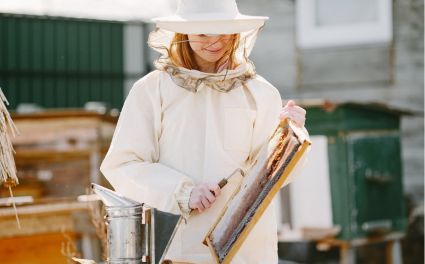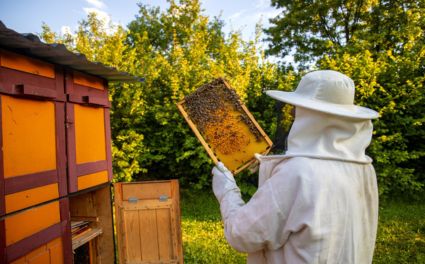Beekeeping thrives on precision — every piece of equipment plays a vital role in maintaining a healthy and productive hive. Among the most valuable tools is the queen excluder, designed to manage hive structure and improve honey production. Understanding how and when to use it effectively can make the difference between an average and an exceptional beekeeping season.
This guide explains what a queen excluder is, its benefits, installation methods, and how to pair it with the right Beekeeping Equipments for smooth hive operation.
🏠 What Is a Queen Excluder?
Definition and Purpose
A queen excluder is a framed grid that sits between the brood chamber and honey super. The grid spacing allows worker bees to pass freely but restricts the larger queen bee, keeping her confined to the brood chamber. This ensures the honey super remains free of brood and is used solely for storing honey — resulting in purer extractions and easier hive inspections.
Types of Queen Excluders
-
Metal Queen Excluders: Durable, long-lasting, and ideal for professional setups.
-
Plastic Queen Excluders: Lightweight and cost-effective, great for small apiaries.
-
Wooden Queen Excluders: Classic designs that combine wood frames with metal grids for added strength.
Each material offers unique advantages depending on the beekeeper’s climate, hive size, and experience level.

⚙️ How a Queen Excluder Works
By separating the queen from the upper boxes, the excluder ensures all eggs, larvae, and pupae remain in the lower brood section. Worker bees can still move nectar to the supers, but the honey remains brood-free. This simplifies extraction and keeps the honeycombs cleaner.
During active honey flows, the queen excluder promotes efficiency and helps beekeepers maintain organization inside the hive — a crucial factor in long-term productivity.
🌸 Benefits of Using a Queen Excluder
Improved Honey Production
With the queen limited to the brood area, the upper supers are used exclusively for honey storage. This separation makes the extraction process faster and ensures cleaner honey.
Better Brood Management
Keeping brood confined to one section allows for consistent brood patterns, easier inspections, and better disease management. It also ensures a more predictable population cycle.
Enhanced Hive Health
A structured hive improves airflow, reduces overcrowding, and limits the spread of pests and pathogens.
Simplified Hive Inspections
Beekeepers can inspect the honey supers without disturbing the brood, saving time and minimizing stress on the colony.
For more detailed insights into managing hive health, you can Learn Beekeeping through practical educational blogs.
🌻 When and Why to Use a Queen Excluder
Best Time to Install
Install the queen excluder in spring or early summer when foraging is strong, and the queen is actively laying. This ensures honey supers are filled efficiently.
Seasonal Adjustments
In colder months, some beekeepers remove the excluder so the queen and workers can move together for warmth, improving winter survival rates.
Special Situations
-
Requeening: Temporarily confine the queen to manage acceptance by worker bees.
-
Swarm Control: Limit the queen’s access to reduce swarming tendencies.
Efficient seasonal use keeps colonies balanced and productive throughout the year.
🧰 Installing a Queen Excluder: Step-by-Step
-
Prepare the Hive: Clean all boxes and check for pests or disease.
-
Locate the Queen: Ensure she’s in the brood chamber before adding the excluder.
-
Place the Excluder: Position it between the brood box and honey super, ensuring there are no gaps.
-
Reassemble the Hive: Replace the supers carefully and align the frames properly.
Tips for Proper Installation
-
Keep the excluder clean to prevent blockage.
-
Avoid installing during cold spells.
-
Check for tight alignment — even small gaps can allow the queen through.
To work safely during this process, wear premium Beekeeping Suits with reinforced zippers and breathable fabric. Pair your suit with high-grip Beekeeping Gloves, a durable Beekeeping Veils, and protective Beekeeping Trousers for comfort and safety.
🐝 Maintaining and Inspecting Hives with an Excluder
Regular Hive Inspections
With brood and honey separated, inspections are more efficient. Monitor brood patterns, check honey levels, and verify that the queen remains below the excluder.
Monitoring Brood and Honey Production
Healthy brood frames and full honey supers indicate that the system is functioning correctly. If brood appears above the excluder, double-check for gaps or queen movement.
Ensuring Queen Health
Regularly inspect the brood chamber for signs of consistent egg-laying. The queen’s productivity determines colony success.
Protective gear like Beekeeping Jackets helps beekeepers perform detailed inspections without risk.
⚠️ Common Challenges and Solutions
Reduced Queen Mobility
Some queens may struggle to move freely. Keep the excluder clean and inspect it regularly to prevent buildup.
Worker Bee Traffic
Congestion can occur if workers hesitate to pass through. A clean, properly fitted excluder ensures steady bee flow between boxes.
Seasonal Adjustments
If honey production slows, temporarily removing the excluder may help during nectar shortages. Always observe colony behavior before making changes.
For additional maintenance tools, browse reliable Beekeeping Equipments designed to simplify inspections and hive repairs.
💡 Advanced Hive Management Tips
Combine with Other Equipment
Pair the excluder with entrance reducers or top ventilation systems to improve hive airflow.
Strategic Use for Honey Harvest
During peak nectar flows, use excluders to keep honey supers brood-free and easy to extract.
Observe and Adjust
Consistent observation is vital. If you see reduced productivity, check alignment, worker traffic, or queen confinement. Small adjustments can prevent large losses.
For extra comfort during long hive sessions, Beekeeping Ankle Protection ensures safety against crawling bees.
🧒 Beekeeping for Kids: Safe and Educational
Beekeeping can be an exciting learning experience for children when approached safely. OZ Armour, a trusted global brand, designs durable Beekeeping Kids Suits that offer excellent ventilation and sting protection, helping young beekeepers confidently assist with tasks like installing or cleaning a queen excluder.
For those who enjoy a touch of color, Pink Bee Suits combine safety with style, suitable for both hobbyists and family beekeepers.
🧤 OZ Armour’s Commitment to Quality
OZ Armour is recognized globally for manufacturing high-quality protective beekeeping wear — including suits, gloves, jackets, veils, and trousers. Each product reflects their dedication to comfort, durability, and safety, ensuring that beekeepers across the USA, UK, EU,NZ and AU can work confidently in all conditions.
📖 Continue Your Beekeeping Journey
Beekeeping is a continuous learning process. Keep exploring educational resources and guides to stay ahead. Expand your knowledge and Read More Blogs About Beekeeping to refine your techniques and understand seasonal hive management.
For those eager to deepen their expertise, visit Learn Beekeeping — a collection of detailed articles on bee behavior, equipment care, and colony development.

🐝 Conclusion
Mastering the use of a queen excluder is a game-changer for efficient hive management. It allows beekeepers to improve honey production, maintain brood health, and organize colonies for easier inspections.
When combined with proper tools — from beekeeping jackets and suits to veils, gloves, and ankle protection — beekeeping becomes safer, more efficient, and enjoyable for all ages.
With the right knowledge, equipment, and care inspired by global leaders like OZ Armour, every beekeeper can create a thriving, sustainable apiary and contribute to the growing world of responsible beekeeping.



